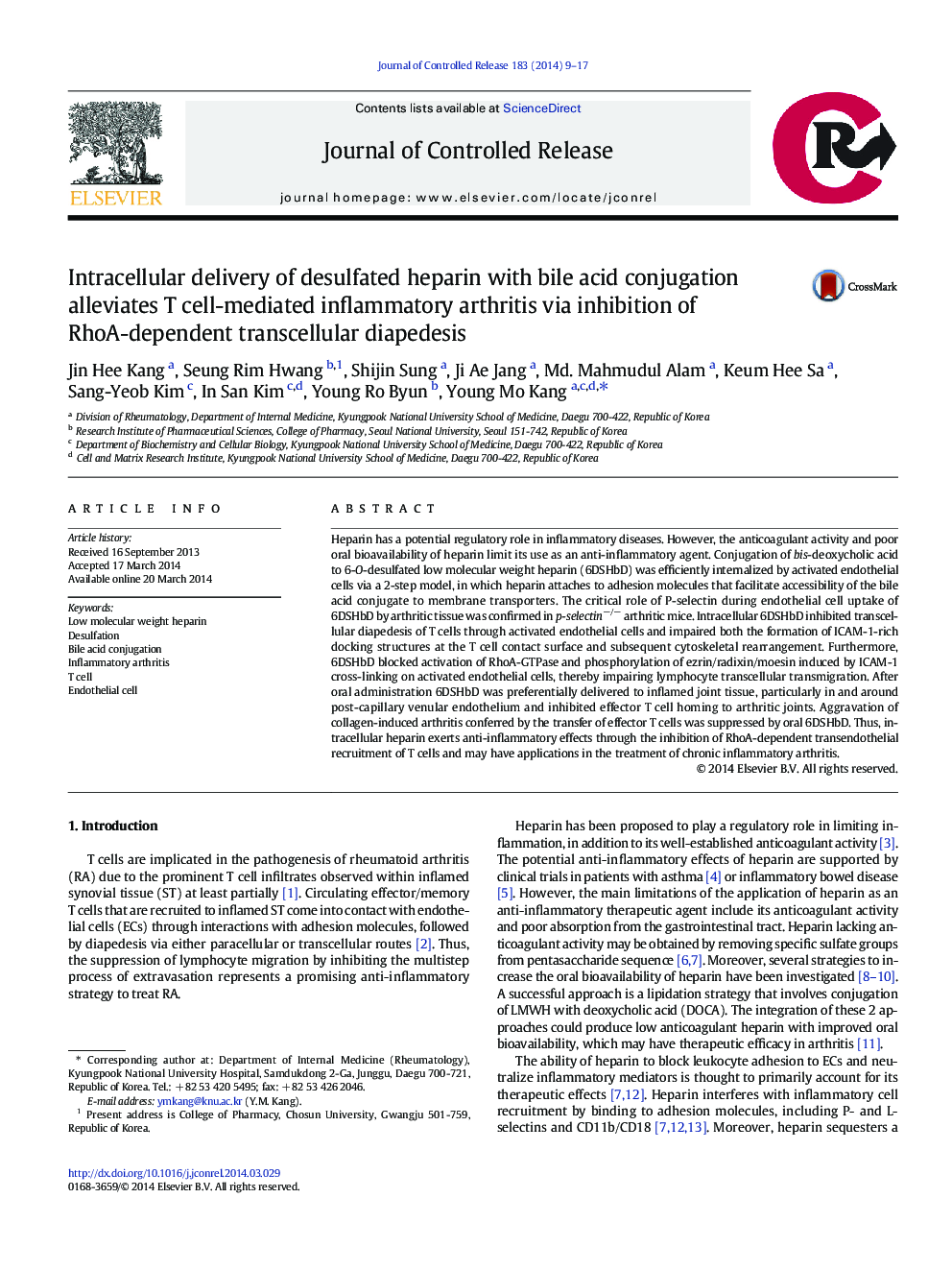| Article ID | Journal | Published Year | Pages | File Type |
|---|---|---|---|---|
| 1423999 | Journal of Controlled Release | 2014 | 9 Pages |
Heparin has a potential regulatory role in inflammatory diseases. However, the anticoagulant activity and poor oral bioavailability of heparin limit its use as an anti-inflammatory agent. Conjugation of bis-deoxycholic acid to 6-O-desulfated low molecular weight heparin (6DSHbD) was efficiently internalized by activated endothelial cells via a 2-step model, in which heparin attaches to adhesion molecules that facilitate accessibility of the bile acid conjugate to membrane transporters. The critical role of P-selectin during endothelial cell uptake of 6DSHbD by arthritic tissue was confirmed in p-selectin−/− arthritic mice. Intracellular 6DSHbD inhibited transcellular diapedesis of T cells through activated endothelial cells and impaired both the formation of ICAM-1-rich docking structures at the T cell contact surface and subsequent cytoskeletal rearrangement. Furthermore, 6DSHbD blocked activation of RhoA-GTPase and phosphorylation of ezrin/radixin/moesin induced by ICAM-1 cross-linking on activated endothelial cells, thereby impairing lymphocyte transcellular transmigration. After oral administration 6DSHbD was preferentially delivered to inflamed joint tissue, particularly in and around post-capillary venular endothelium and inhibited effector T cell homing to arthritic joints. Aggravation of collagen-induced arthritis conferred by the transfer of effector T cells was suppressed by oral 6DSHbD. Thus, intracellular heparin exerts anti-inflammatory effects through the inhibition of RhoA-dependent transendothelial recruitment of T cells and may have applications in the treatment of chronic inflammatory arthritis.
Graphical abstractFigure optionsDownload full-size imageDownload high-quality image (315 K)Download as PowerPoint slide
